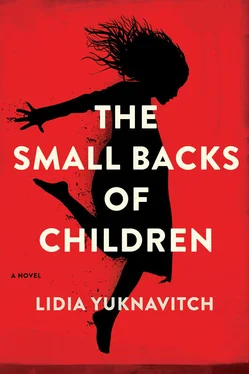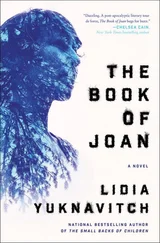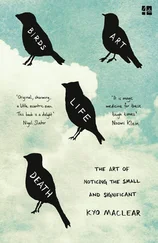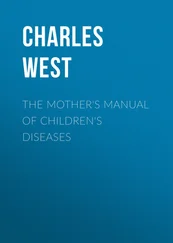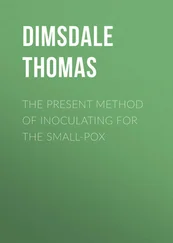Is it love to want to die there, inside that image?
The not-dead daughter.
Later, her father creates an oral history of that moment, tells and tells it around great fires after dinners, after work, after the tiny family — a wife, a son, a daughter — has settled and touched one another and drunk and moved between house smells and fire. For something else happened there besides her love for him. Her knees pressed against his cheeks. A story. A story about animals.
“A caribou was walking against the forest next to a frozen lake with his family. The youngest fell lame and the mother, who was already weakened from childbirth, insisted on carrying her. The mother became weaker and weaker, and at some point was so delirious with fatigue that she let slip the tiny life, into the great flattened white of things. A human girl and her father came upon the tiny thing just as it was dying. The girl held its head and the father sang a very old song with his eyes closed. It was what to do. Then she died.”
And her father narrates the ending in song, lyric. But the girl’s imagination. . travels.
In her head, the girl continued her own story beyond the ending of the father and daughter who came upon the dying animal. In her story, the girl wonders, What was the last thing the youngest caribou saw? Was it the image of her animal father and her animal mother disappearing into blur and ice? Or perhaps by chance she saw her, her and her father, before she passed. If it was the strong back of her animal father and the tender rhythm of her animal mother’s legs she saw, maybe her leaving took a home with it forever. And if it was the human father and daughter she saw last, perhaps the difference in their species melted as snow in a great thaw, the word she and the word her becoming each other, daughter and caribou, perhaps their beating of hearts simply became the earth’s cadence, perhaps bodies returned to their animal past — hand and hoof releasing to the energy of matter.
She loves the story, this story her father told and told before her family was blown to bits — their bodies exploding back to molecules and light and energy. Fatherless, beautiful story poem.
It becomes a story she loves to death.
The not-dead daughter.
It is the story of children.
The poet puts the last of the joint out in the palm of her hand. “How long has she been writing this?”
The filmmaker answers, “About seven years.”
But then the front door cracks open and the playwright flutters in like an enormous unstoppable moth. “Listen,” he yell-breathes.
The filmmaker stands up.
“They said they. .,” he sputters.
The filmmaker walks to the playwright and wordlessly grabs him by his arms, briefly lifting him slightly off the ground.
“They said they don’t know if she will make it through the night. They’re trying to determine if she took something. They won’t know until morning. They said come back when the sun comes up. They said this should be over by then. One way or another.” His words dissolve into breathing.
We have to do something.
The filmmaker lets go of the playwright and heads back out the front door, grabbing his car keys from a table. The front door swings behind him, open as a mouth.
The playwright stares at the poet, and at the broken glass, as they listen to the sound of a husband peeling out of his own driveway and neighborhood.
The poet cradles the writer’s journal like a child.
The playwright holds his own arms. “What should we do?”
The poet stares past him into the night. Then she turns her gaze to the living room wall, there in the writer and filmmaker’s house, the house where they’ve all come to know one another, the wall with the photo they’ve all seen.
She’s thinking about grief and trauma, how they can hide out inside a woman, how they can come back.
The playwright follows her eyes, until he sees what she sees.
The photographer’s framed image, the orphan girl lit up by the explosion, a girl blowing forward, a girl coming out of fire, a girl who looks as if she might blast right through image and time into the world
“I know what’s happened,” the poet says.
When the girl paints a red face, with orange streaks shooting from the eyes and mouth, the widow asks, “Is that your face? Are you angry?”
When the girl paints an indigo face, with aqua eyes and a green mouth, with hair like sea grass, the widow asks, “Is that your face? Are you swimming?”
When the girl paints a bright yellow face, with bright blue eyes and gold hair splaying out like the rays of the sun, the widow asks, “Is that your face? Are you happy?”
And when the girl paints a black face with a crimson gash interrupting the eye, the nose, the mouth, nearly dissecting the image, the widow asks, “Is that your face? Is that your fear?”
It is only when the girl paints a face that looks like a girl’s, expressionless, flat, calm, just a girl looking out, not a smile but not the negation of one either, that the widow stops asking the girl about the faces. The widow smiles and hangs the painting of the quiet, calm girl on the wall in the common room.
The girl goes back to her labor. Every color alive.
Hundreds of faces on wood — as if a forest of faces could come alive.
It’s three A.M. He’s thirsty. His jaw hurts where the fucking filmmaker tried to knock it off his face. He’s lying next to the performance artist on a futon in her loft. She brought him home with her from the hospital, and not the first time. They’ve been doing it for years. The rest of the gang may have exiled him from their little posse, but not her. As long as he stays away from them, away from the woman who used to be his wife, there’s not a goddamn thing they can say or do.
Whatever. He looks around the performance artist’s room. She’s snoring. He needs to not think. Badly. He reaches for a half-empty bottle of wine on the bedside table and drinks the rest in a single motion. He stares at the blank wall. He gets up. The naked man pads into the kitchen, finds another bottle of wine, opens it, brings it back to the bedroom. Drinks half. He rifles through some CDs there on the floor, finds The Doors. He sticks it in the CD player. Volume low. Sleeping, sexed-up woman. He finishes the bottle. He lies back down.
Resting there like a wetted corpse, next to this particular lover — who has always looked a little like a Nabokov nymphet to him, her pale taut skin, her pointy tits and hip bones, her girlboy frame, one of those women with an eternally twelve-year-old body — he thinks of his life as a series of women’s bodies. Women’s bodies in every room he enters, every country, every gallery, every bar, every store or post office or restaurant. Married women and single women, professional women and working girls, women in therapy and women with money and women who barely spoke English, junkie women and artist women and famous women and skid-row women and all-used-up women and somebody’s-daughter women. Women of every age. Riders on the storm. He drinks.
He has a memory of his ex-wife. The body of her, the devouring wife love hole. He thinks of the day he left her, remembers thinking something like, It’s easy . I can leave the room, the house, the country. I can stop pretending to like Miles Davis and Nina Simone and Frida fucking Kahlo and Marguerite Duras. I can go to another house or state or country, and women who are not American might come sit on my face.
Faces are what he paints. Abstract faces, over and over and over again. He thinks of something someone said to him at his last show, entitled “I Am Cross with God: Intimate Portraits,” a series of abstract faces, eight feet by eight feet. The person had said, “Why do the faces look like they are in pain?” It’d been half an hour into the opening, and he’d had seven glasses of wine. And he’d said back, “The next time you kiss someone you love, open your eyes. Think about what their face looks like. That close. That familiar. So familiar you can’t bear it. Distorted.” Then he walked away, grabbing two of the wine bottles on his way like a cowboy with a pair of revolvers.
Читать дальше
